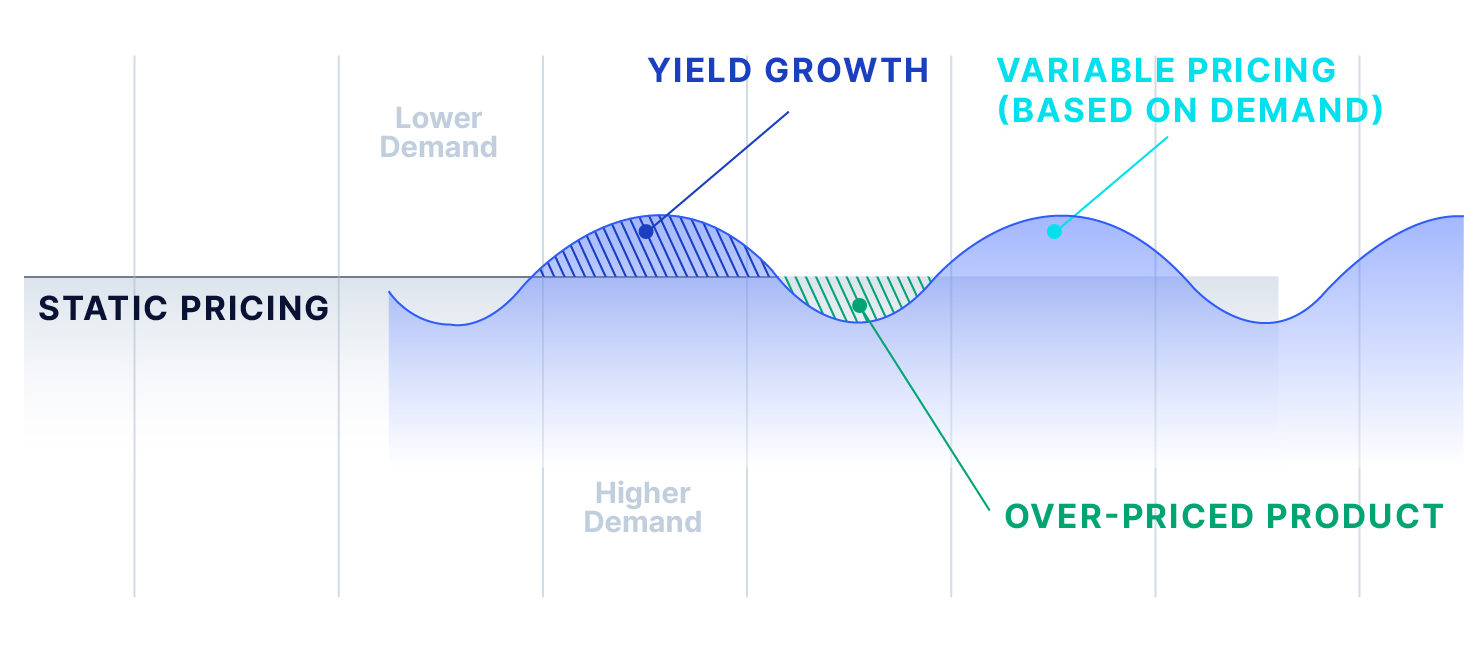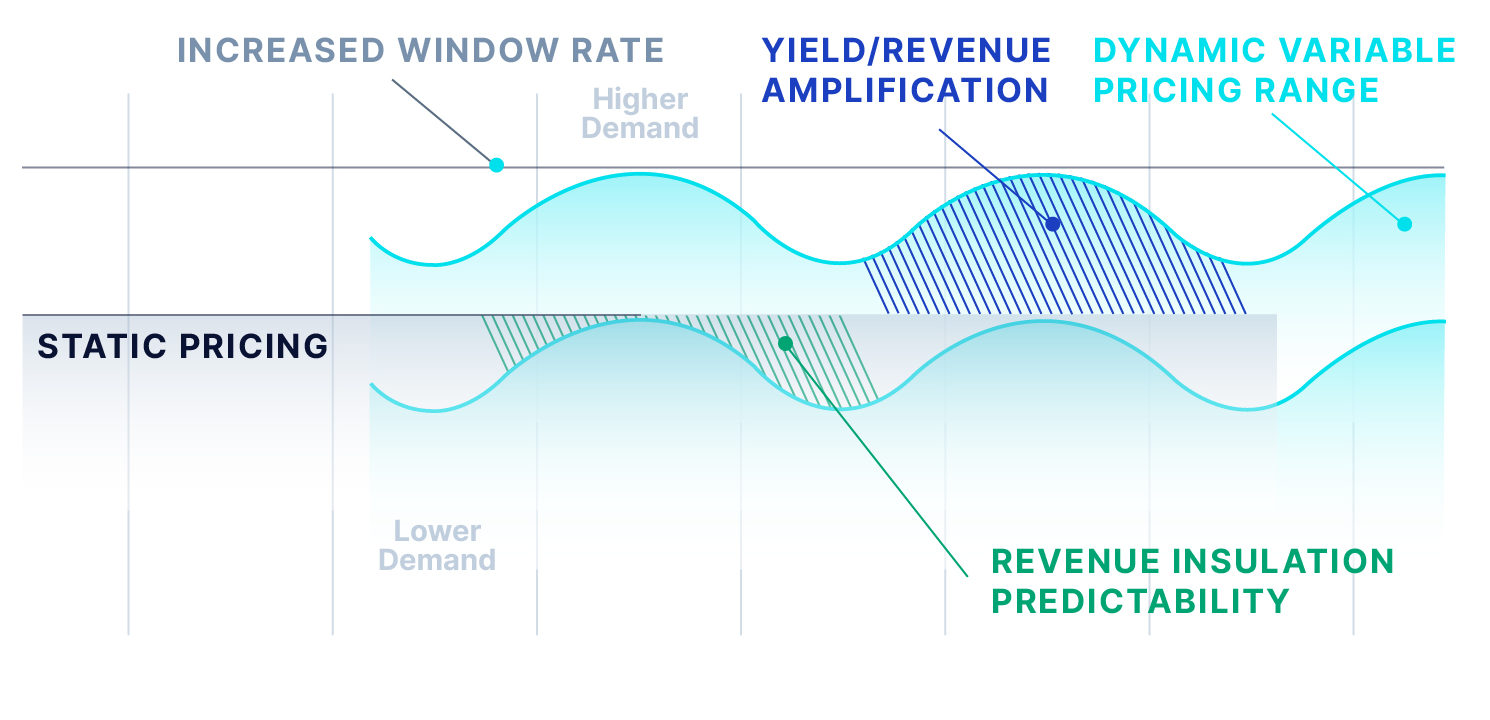
First we have to understand what is Dynamic Pricing.
Dynamic Pricing Definition
Dynamic ticket pricing employs different prices for different days that change over time while variable pricing employs different prices for different days that stay the same over time. Dynamic pricing in and of itself is not a success metric for any business, but it is a powerful tool that businesses can employ to improve online sales efficiency, revenue, and guest experience.
Dynamic pricing has revolutionized aspects of revenue management – giving businesses like airlines, hotels, ski resorts, water parks, and theme parks the ability to harness consumer behaviors and data to adjust prices in real-time to drive online sales.
For the novice and even experienced operator, there can be initial confusion around the specific types of pricing strategies and, more importantly, which is best suited to the specific kinds of sales that the business is looking to optimize. The first step for getting up to speed in modern revenue management is distinguishing variable pricing from dynamic pricing.
Understanding Pricing Strategies
There are three types of pricing strategies available to attraction and park operators today. The one you choose will depend on a number of factors, including your team, technology, and overall business goals. You may even choose different strategies across your available products.
The three types of pricing strategies are:
- Static Pricing: Price remains constant from day to day.
- Variable Pricing: Price varies based on the day, but does not move over time for any given day.
- Dynamic Pricing: Prices vary based on the day, and then increase through several or many price points based on the capabilities of the underlying e-commerce platform. Depending on the sophistication of the e-commerce system used, prices can either increase automatically or may require manual adjustments.
At Spotlio, we believe that most of the time a fully dynamic pricing strategy takes operators the furthest in terms of revenue potential and improved guest experience.
Static pricing is the traditional model in which operators sell tickets for the same price no matter when the ticket is purchased or when it will be used. These pricing decisions are often based on historical data or a “gut feel” and lead to businesses missing out on valuable revenue. With static pricing, operators are often underpriced on their best days, and overpriced on their slowest days.
Prices in a variable strategy may be based on the day purchased or the time slot for which the ticket is purchased. Each day is priced according to demand, guaranteeing more revenue and yield for peak dates. While businesses gain increased revenue predictability over static pricing, they lack the opportunity to grow yield as demand rises and gain further advanced commitment. Variable pricing works best for less frequented events (think whale watching or reunion concerts) rather than frequent activities such as skiing or golf tee times.

Dynamic Pricing Example
With dynamic pricing, each day is priced according to demand and prices for each day rise as customers approach a given trip date. With limited inventory available at each price point, prices adjust automatically in response to customer demand over time. Operators gain increased operational and financial predictability over a variable pricing strategy.

While variable pricing is certainly an improvement over static pricing, a fully dynamic pricing plan – when implemented with care – will enable you to increase advanced sales the most effectively.
Why?
Because how you price your products online is the most powerful way to shift consumer buying behavior. Aligning the price of a product with perceived value is key to driving conversion rates.
An effective pricing strategy gives your business a giant head start over your competitors. It captures yield and makes the most of your best days by increasing prices as demand increases. It also increases revenue predictability by encouraging customers to commit in advance — and allows your business to earn revenue before they ever arrive. It also maximizes the ROI of your marketing campaigns by increasing conversion rates from online sales platforms.
How to Select a Pricing Strategy That Works for You
A fully automated dynamic pricing strategy is the gold standard for most tours, tickets, and attractions businesses. But the truth is that each attraction is different. The product is different, the audience is different, and the investment that can be made toward revenue management is different.
Spotlio’s revenue management platform offers a variety of pricing strategies to align with the needs of your business and grow revenue. The team works directly with businesses to determine the best strategy to meet their individual goals.
In addition to pricing intelligence tools, Spotlio’s white label e-commerce platform was designed with dynamic pricing in mind. With a seamless journey from browsing to buying, your customers can quickly find what they’re looking for, which boosts conversion rates and customer satisfaction. Once the platform is in place, real-time data helps your team glean insights from analytics so you can tweak your strategy for maximum returns.
Learn how Spotlio can integrate all of your digital and pricing solutions
Spotlio is a trailblazing force in destination digital technology, offering tailor-made solutions — from apps to e-commerce, and almost everything in between — that redefine the way travelers interact with resorts, parks, and attractions. With a decade-long legacy of excellence, Spotlio empowers clients with innovative white-label digital solutions and pricing services, fostering connections and enhancing experiences on a global scale. Request a demo to learn more.

